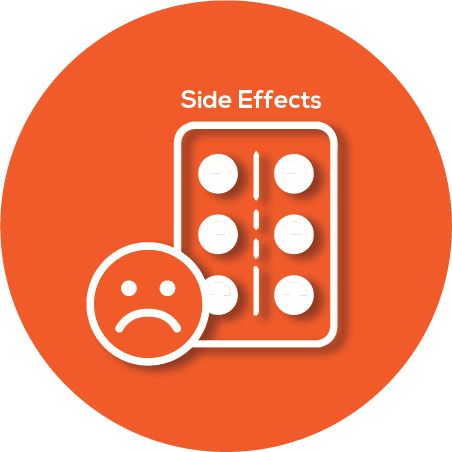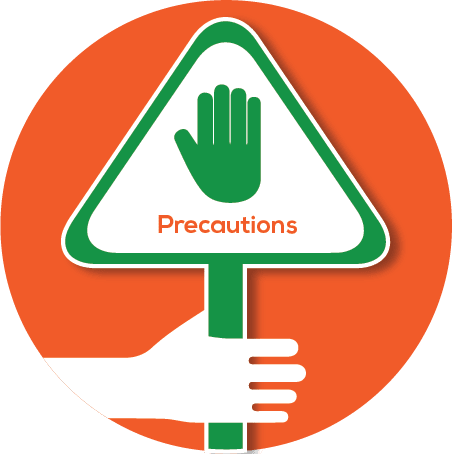amiard (AMISULPRIDE)
Introduction to amiard
Amiard is a medication primarily used to treat mental health conditions such as schizophrenia and other psychotic disorders. It is also effective in treating depression, especial... See More

What is Amiard?
Amiard is a medication used to treat schizophrenia, which is a mental disorder characterized by distorted thinking and perceptions. It belongs to a class of drugs called atypical antipsychotics, which work by affecting certain chemicals in the brain that influence mood and behavior. Amiard helps reduce symptoms like hallucinations and delusions. It is primarily used for schizophrenia but may also be used for other mental health conditions as determined by your doctor. Always follow your doctor's instructions when taking Amiard to ensure safe and effective treatment.

What is the usual dose of Amiard?
The usual starting dose of Amiard for adults is typically 50 mg to 400 mg per day, depending on the condition being treated. It's usually taken once or twice daily. Your doctor may adjust your dose based on your response to the medication and any side effects you experience. The maximum recommended dose is 1200 mg per day. For elderly patients or those with kidney problems, dose adjustments may be necessary. Always follow your doctor's specific dosing instructions for your health needs.

How do I take Amiard?
Take Amiard exactly as your doctor prescribes. It's usually taken once or twice daily, depending on your condition. You can take it with or without food, but try to take it at the same time each day. Swallow the tablets whole; do not crush or chew them. If you miss a dose, take it as soon as you remember unless it's almost time for your next dose. In that case, skip the missed dose and continue with your regular schedule. Do not take two doses at once. Always follow your doctor's specific instructions regarding your medication.

For how long do I take Amiard?
Amiard is usually taken long-term for managing chronic conditions like schizophrenia. The duration of use depends on your response to the medication and any side effects you experience. Your doctor will guide you on how long to take Amiard based on your specific health needs. It's important to follow your doctor's instructions and not stop taking the medication without their advice. Stopping Amiard suddenly can lead to a return of symptoms or withdrawal effects. Regular check-ups with your doctor can help monitor your progress and adjust your treatment as needed.

What disease or symptom is Amiard used for?
Amiard is primarily used to treat schizophrenia, which is a mental disorder characterized by distorted thinking and perceptions. It helps reduce symptoms like hallucinations, delusions, and disorganized thinking. Amiard may also be used for other mental health conditions as determined by your doctor. It can be used alone or as a complementary addition to other therapies. The medication works by affecting certain chemicals in the brain that influence mood and behavior, leading to improved mental health outcomes. Always follow your doctor's instructions when taking Amiard.

How long does it take for Amiard to start working?
Amiard may start working within a few days, but it can take several weeks to achieve its full therapeutic effect. The time it takes to work can vary depending on individual factors like your condition, age, and overall health. Some people may notice improvements in symptoms like reduced hallucinations or delusions sooner than others. It's important to take Amiard exactly as prescribed and attend regular check-ups with your doctor to monitor your progress. If you have concerns about how quickly the medication is working, discuss them with your doctor.

Is Amiard effective?
Yes, Amiard is effective for treating certain mental health conditions. It is primarily used to treat schizophrenia, which is a mental disorder characterized by distorted thinking and perceptions. Clinical studies show that Amiard can help reduce symptoms like hallucinations and delusions. It works by affecting certain chemicals in the brain that influence mood and behavior. The effectiveness of Amiard can vary among individuals, so regular check-ups with your doctor are important to monitor your progress and adjust your treatment as needed.

How do I know if Amiard is working?
You'll know if Amiard is working when you notice a reduction in symptoms of the condition it's treating, such as schizophrenia. This might include fewer hallucinations, delusions, or episodes of disorganized thinking. Regular check-ups with your doctor are important to monitor your progress. They may use questionnaires or scales to assess your symptoms and determine if the medication is effective. If you have concerns about how well Amiard is working, discuss them with your doctor. They can adjust your treatment plan as needed.

How does Amiard work?
Amiard works by blocking certain receptors in the brain, specifically dopamine receptors. Dopamine is a chemical that affects mood and behavior. By blocking these receptors, Amiard helps reduce symptoms of schizophrenia, such as hallucinations and delusions. Think of it like turning down the volume on a radio that's too loud. This medication helps balance the levels of dopamine in the brain, leading to improved mental health outcomes. It's important to take Amiard as prescribed to achieve the best results for your condition.

Who should avoid taking Amiard?
Amiard should not be used if you have a known allergy to it or its ingredients. This is an absolute contraindication, meaning the drug must not be used due to severe risks. It is also contraindicated in people with pheochromocytoma, which is a rare tumor of the adrenal gland, and in those with severe kidney problems. These conditions can increase the risk of serious side effects. Always inform your doctor about your medical history and any other medications you are taking to ensure Amiard is safe for you.

Can I take Amiard with other prescription drugs?
Amiard can interact with other medications, increasing the risk of adverse effects. Major interactions include those with medications that affect heart rhythm, such as certain antibiotics and antiarrhythmics. These interactions can increase the risk of heart rhythm problems. Moderate interactions may occur with medications that affect the central nervous system, like sedatives or antidepressants, which can enhance side effects like drowsiness. Always inform your doctor about all the medications you are taking to ensure Amiard is safe for you. They can help manage potential interactions and adjust your treatment as needed.

Can Amiard be taken safely while pregnant?
The safety of Amiard during pregnancy is not well-established. Limited evidence makes it difficult to provide definitive advice about its safety. Animal studies suggest potential risks, but human data is lacking. If you're pregnant or planning to become pregnant, discuss the risks and benefits of using Amiard with your doctor. They can help determine the safest treatment plan for you and your baby. It's important to weigh the potential risks of untreated mental health conditions against the risks of medication use during pregnancy.

Can Amiard be taken safely while breastfeeding?
The safety of Amiard while breastfeeding is not well-established. Limited information is available about whether this medication passes into breast milk. Potential risks to the breastfed infant are not well-documented. If you're breastfeeding or planning to breastfeed, discuss the risks and benefits of using Amiard with your doctor. They can help determine the safest treatment plan for you and your baby. It's important to consider the potential impact on milk supply and the health of your infant when making decisions about medication use during breastfeeding.

Is Amiard safe for the elderly?
Elderly individuals are more vulnerable to the safety risks of medications like Amiard. They may experience side effects more frequently or severely, such as dizziness or heart rhythm problems. Amiard can be used in the elderly, but with caution. Dose adjustments may be necessary, and regular monitoring is important to ensure safety. If you're an older adult taking Amiard, discuss any concerns with your doctor. They can help manage your treatment and minimize potential risks.

How should I store Amiard?
Store Amiard at room temperature, away from moisture and light. Keep it in a tightly closed container to protect it from damage. Do not store it in humid places like bathrooms, as moisture can affect how well the medication works. If your pills came in packaging that isn't child-resistant, transfer them to a container that children can't easily open. Always store Amiard out of children's reach to prevent accidental swallowing. Check the expiration date regularly and properly dispose of any unused or expired medication.

Does Amiard make people tired or drowsy?
Yes, Amiard can make people feel tired or drowsy, but this is not very common. These constitutional side effects are usually mild to moderate in severity. If you notice you're feeling very sleepy or fatigued while taking Amiard, talk with your doctor. Your tiredness might be caused by something else, like another medication you're taking, or an underlying health condition. Your doctor can help determine what's causing your symptoms and recommend appropriate adjustments to your treatment plan. Proper rest, regular physical activity, and a balanced diet can help maintain your energy levels.

Does Amiard cause stomach upset?
Yes, Amiard can cause stomach upset, but it's not very common. Some people may experience nausea, vomiting, or abdominal pain. These gastrointestinal side effects are usually mild to moderate in severity. If you experience mild stomach upset, taking the medication with food might help reduce discomfort. Most people take Amiard without having any stomach issues. However, if you develop severe or persistent stomach problems, talk with your doctor. They can help determine if these symptoms are related to Amiard or if there might be another cause.

Does Amiard affect sleep?
Yes, Amiard can interfere with sleep, but this is not very common. Some people may experience sleep disturbances like insomnia, which is difficulty falling or staying asleep. These effects are usually mild to moderate in severity. If you notice changes in how well you sleep after starting Amiard, talk with your doctor. They can help determine if these sleep issues are related to the medication and suggest ways to improve your rest while continuing your treatment. It's important to address any sleep problems you experience.

Does Amiard make it hard to think or concentrate?
Yes, Amiard can make it hard to think or concentrate, but this is not very common. Some people may experience cognitive side effects like difficulty concentrating or remembering things. These effects are usually mild to moderate in severity. If you notice problems with your thinking after starting Amiard, talk with your doctor. They can help determine if these issues are related to the medication and suggest solutions while keeping your treatment plan on track. Don't stop taking Amiard without talking to your doctor first.

Does Amiard affect mood?
Yes, Amiard can affect mood, but this is not very common. Some people may experience mood changes, anxiety, or agitation. These mental health side effects are usually mild to moderate in severity. If you notice changes in your mood or mental well-being after starting Amiard, talk with your doctor. They can help determine if these symptoms are related to the medication and suggest appropriate support while continuing your treatment. It's important to address any mental health changes you experience.

Does Amiard interfere with sexual function?
Yes, Amiard can interfere with sexual function. It may cause sexual health side effects like erectile dysfunction or loss of libido, which is a reduced interest in sexual activity. These side effects are considered occasional, meaning they occur in less than 10% of people taking the medication. The severity of these side effects can range from mild to moderate. If you experience mild or moderate sexual health side effects, talk with your doctor. They can help determine if these issues are related to Amiard and suggest ways to manage them while continuing your treatment.

Does Amiard affect appetite?
Yes, Amiard can affect your appetite, but this is not very common. Some people may experience changes in how hungry they feel or how much they want to eat. These effects are usually mild to moderate in severity. If you notice any unexpected changes in your appetite after starting Amiard, talk with your doctor. They can help determine if these changes are related to the medication and suggest ways to manage them. Maintaining regular meal times and a balanced diet can help manage mild appetite changes.

Does Amiard cause weight gain?
Yes, Amiard can affect your weight. Weight gain is a common side effect, occurring in more than 10% of people taking the medication. The severity of weight gain can vary from mild to moderate. If you notice significant weight changes while taking Amiard, talk with your doctor. They can help determine if the weight gain is related to the medication and suggest ways to manage it. Maintaining a balanced diet and regular exercise can help manage weight changes while on this medication.

Does Amiard cause headaches?
Yes, Amiard can cause headaches, but they are not very common. Most people take this medication without experiencing headaches. If headaches do occur, they are usually mild to moderate in severity. Staying well-hydrated and resting may help manage mild headaches. You can also take over-the-counter pain relievers after consulting with your doctor. If you experience severe or persistent headaches while taking Amiard, talk with your healthcare provider. They can help determine if the headaches are related to the medication or if there is another cause that needs attention.

Does Amiard limit driving?
Amiard might affect your ability to drive safely. It can cause side effects like dizziness, drowsiness, or blurred vision, which may impair your driving. If you experience these symptoms, avoid driving until you understand how the medication affects you. When you first start taking Amiard, pay attention to how your body responds before getting behind the wheel. Talk with your doctor about any concerns you have about driving while taking this medication, especially if you notice any unusual symptoms.

Is it safe to drink alcohol while taking Amiard?
It's best to avoid alcohol while taking Amiard. Alcohol can increase the risk of side effects like dizziness and drowsiness, which can impair your ability to function safely. Drinking alcohol while on this medication can also worsen symptoms of the condition being treated, such as schizophrenia. If you do choose to drink occasionally, limit your alcohol intake and be aware of how it affects you. Talk with your doctor about alcohol use while taking Amiard to get personalized advice based on your specific health situation.

Is it safe to drink coffee or tea while taking Amiard?
You can drink coffee and tea while taking Amiard, but moderation is key. Caffeine, which is found in coffee and tea, can sometimes increase anxiety or restlessness, which might affect how you feel while on this medication. Amiard can also cause drowsiness, so be mindful of how caffeine affects you. If you notice any unusual symptoms, talk with your doctor. They can provide personalized advice on caffeine consumption while taking Amiard, ensuring your treatment remains safe and effective.

Is it safe to exercise while taking Amiard?
Yes, you can exercise while taking Amiard, but be cautious. This medication can cause dizziness or drowsiness, which might affect your ability to exercise safely. If you feel dizzy or lightheaded during physical activity, stop and rest. Drink plenty of water to stay hydrated, especially if you're exercising in hot weather. Most people can maintain their regular exercise routine while taking Amiard, but check with your doctor if you have concerns about your specific situation. They can provide guidance on safe exercise practices.

What are Amiard possible harms and risks?
The most common side effects of Amiard include drowsiness, insomnia, headache, weight gain, and dry mouth. More significant adverse effects may include extrapyramidal symptoms (EPS) such as tremors, rigidity, and akathisia (restlessness). Endocrine issues, like increased prolactin levels, can lead to galactorrhea (milk production), amenorrhea (absence of menstruation), or sexual dysfunction. Tardive dyskinesia (involuntary movements) and QT prolongation (heart rhythm abnormalities) are rare but serious risks. Monitoring for these side effects is essential.
Available in 3 variations

Amiard 100mg Tablet
Amiard 100mg Tablet
Amisulpride (100mg)
strip of 10 tablets

Amiard 200mg Tablet
Amiard 200mg Tablet
Amisulpride (200mg)
strip of 10 tablets

Amiard 50mg Tablet
Amiard 50mg Tablet
Amisulpride (50mg)
strip of 10 tablets










.svg)
